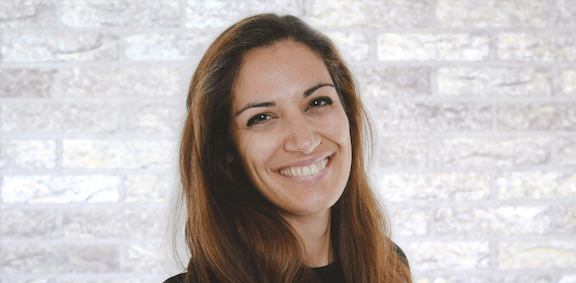Biosketch

Cristina Paulino, originally from Portugal, studied biochemistry at the Heinrich-Heine University in Dusseldorf (German). She conducted her Master Thesis at the Max-Planck Institute of Molecular Physiology in Dortmund (Germany), and graduated in 2008. During her undergraduate and following doctoral studies at the Max-Planck Institute of Biophysics in Frankfurt (Germany), she was trained in membrane protein biology. Under the supervision of Prof. Werner Kühlbrandt, a pioneer in the field, she became proficient in electron cryo-microscopy (cryo-EM) and obtained her PhD with distinction (summa cum laude) in 2014. Building upon her expertise, she implemented the technique of cryo-EM in the group of Prof. Raimund Dutzler (University of Zurich, Switzerland) during her postdoctoral studies. In August 2017 she obtained a tenure-tracked position as an Assistant Professor and became head of the cryo-EM unit at the Groningen Biomolecular Sciences and Biotechnology Institute (GBB), University of Groningen. In June 2022 she was promoted to Associate Professor. Recently Cristina has been recruited by the University of Heidelberg (Germany), and has joined the Biochemistry Centre (BZH) as a Full Professor in Structural Biology with most of her lab members in March 2023. She remains affiliated to GBB as a guest professor at the University of Groningen.
The Paulino lab focuses on elucidating the mechanism of action of membrane transporters (secondary- and primary-active) and channels on a molecular level, employing cryo-electron microscopy with comprehensive functional studies. The projects are driven by fundamental questions of how membrane transporters work, how the protein architecture translates into function, what the exact mechanism of action is during membrane translocation of compounds, how they are regulated, and how malfunctioning relates to a disease. Over the past years, she has gained a particular interest in membrane transport proteins that fall out-of-the-box, challenging the conceptual boundaries present when classifying transport mechanisms into merely primary-active and secondary-active transporters or channels. It is becoming increasingly evident that in the course of evolution conserved protein architectures not only evolved from one another, but can merge together to adapt to different environmental and cellular requirements.
Cristina has published 20 peer-reviewed paper, of which several in highly visible journals and which are cited increasingly (Google Scholar). She was awarded a PhD Fellowship from the Portuguese Science and Technology Foundation, a Postdoc Fellowship from the University of Zurich, a MSCA Individual Fellowships, several NWO grants (Veni, Start-Up, and an ENW-M2 grant (with Bert Poolman)). In 2020, she was awarded the NVBMB prize that recognises the work of highly talented young independent PIs in the field. In the Netherlands Electron Microscopy Infrastructure roadmap (NEMI), which aims to shape the Dutch cryo-EM landscape, she headed until recently the national single-particle cryo-EM flagship node and was member of the executive board. At the University of Heidelberg, she now heads the HDcryoNET and is the spokesperson of the structural biology workgroup of the German Society for Biochemistry and Molecular Biology. Cristina holds other board and committee positions, serve as a regular reviewer, and has organized and chaired numerous meetings and conferences, highlighting her commitment to serve the community and disseminate science. She receives several invitations per year to speak at prestigious conferences and is well integrated in the cryo-EM and membrane protein community. She fosters a broad network, has a good media coverage (>3k Twitter followers, highlighted on Biophysics Society profiles) and is a devoted mentor and active in the promotion of women in STEM.
Three top publications 2017-2022
1. Silberberg JM, Stock C, Hielkema L, Corey RA, Rheinberger J, Wunnicke D, Dubach VRA, Stansfeld PJ, Hänelt I & Paulino C (2022) Inhibited KdpFABC transitions into an E1 off-cycle state. eLife 11: e80988; DOI: https://doi.org/10.7554/eLife.80988
We were able to a more detailed view on the transporter coupling mechanism, showing that a phenylalanine residue is directly linked to ion propagation and turnover by acting as a gatekeeper to avoid nonspecific access to PBS and CBS from the intersubunit tunnel, preventing an uncoupling of ATP hydrolysis from K+.
2. Garaeva AA, Oostergetel GT, Gati C, Guskov A, Paulino C* & Slotboom DJ* (2018) Cryo-EM structure of the human neutral amino acid transporter ASCT2. Nature Structural and Molecular Biology 25: 515–521; DOI: https://doi.org/10.1038/s41594-018-0076-y
We were able to solve the first structure of the human ASCT2, a promising new drug target for cancer therapy. The structure hints at a key mechanistic question, which we were able to prove in follow-up studies, namely that the SLC1A superfamily of glutamate transporters works via a one-gate elevator mechanism. Here, the same structural element controls access to the substrate-binding site on both sides of the membrane. Further, we were able to identify potential allosteric binding sites, which we are currently exploiting for inhibitor design.
3. Paulino C*, Kalienkova V, Lam AKM, Neldner Y & Dutzler R* (2017) Activation mechanism of the calcium-activated chloride channel TMEM16A revealed by cryo-EM. Nature 552: 421–425; DOI: https://doi.org/10.1038/nature24652
First structures of the TMEM16A channel allowed us to unravel how a similar protein architecture can adapt to exert different tasks (channles vs lipid sramblase) and identified structural elements that are directly linked to ligand-binding and regulate anion conduction. This work received a high level of attention, due to the potential of TMEM16A in cystic fibrosis therapy and paved the way for follow-up studies, with our group playing a leading role in understanding the TMEM16 family.
| Last modified: | 20 October 2023 5.01 p.m. |
